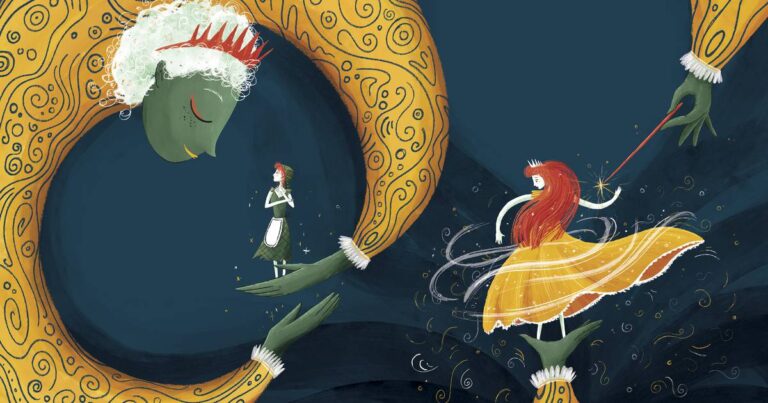With Halloween on the horizon, a new novel from Alan Nolan, The Sackville Street Caper (O’Brien Press, €6.99, 8+) evokes Victorian Dublin for young readers with gothic glee. Starring a young Bram Stoker as he seeks adventure on the city streets, Nolan takes a tongue-in-cheek approach to influence that will delight the informed reader. More importantly, he has crafted a rollicking story that any young adventure-loving reader will warm to.
On the run from his boring boarding school, Bram finds himself embroiled with a gang of cutpurses, led by the curly-topped Molly Malone, “the sneakiest sneak thief in the whole of Ireland”. With the evil debt-ridden Count Vladimir Grof-Constantin de Lugosi lurking in the tenements as well, the young Bram finds more than enough inspiration for the stories he hopes he will someday write. From the clever chapter titles to the infinitely interesting characters (including the lovable Billy the Pan), Nolan has married attention to detail with a dollop of cinematic fun. The Sackville Street Caper is the perfect page-turner for the midterm break.
Darkness is also on the horizon in Helena Duggan’s eco-adventure The Light Thieves (Usbourne, £7.99, 10+). Siblings Grian and Solas are at school when the end of the world occurs, or that’s what it feels like anyway, as the building cracks and a dark spot appears on the sun. Three years later, life goes on, with billionaire Howard Hansom determined to save humanity, with a little help from his gadgets. When Grian realises what danger the world (and his sister) is in, he enlists his best friends on a quest into the new world, where Hansom has promised humanity’s safety. Duggan has crafted a pacy thriller with contemporary resonance that is underpinned by brilliant worldbuilding. The imagined technological details are particularly well done, being both terrifyingly familiar as well as uncanny.
Sibling rivalry is at the heart of Marie-Louise Fitzpatrick’s Don’t! (Otter-Barry, £12.99, 2+), in which toddler Geraldine becomes the ousted baby of the family with the arrival of her little brother Boo. Boo is endlessly interesting to her mum and dad. “Isn’t Boo funny!” they say, when he kicks or bites or roars. Looking for their attention and approval, Geraldine kicks and bites and roars too, but she just gets in trouble. Fitzpatrick’s story will strike a chord with growing families and teddy-loving children, while her illustrations, a wash of muted crayon, come into their own when Geraldine rages against the unfairness of life as a three-year-old.
“Luaithrín! Luaithrín! / Glan an teach! / NÍ bheidh tusa / Ag dul amach!” Sibling rivalry drives An Slipéar Gloine (Futa Fata, €12.99, 3+) too, Fearghas Mac Lochlainn’s wonderful retelling of Cinderella, as Gaeilge. Luathrín is the name of the familiar put-upon protagonist who finds a fairy godmother to help transform her into the belle of the ball. A singsong rhyming pattern gives great flow to the story, which is easy to follow, even for those without fluency in the Irish language. Meanwhile, Paddy Donnelly’s romantic illustrations are full of magical patterns and coloured curlicues, adding visual interest to every page.
There is more magic afoot in Alex Dunne’s The Book of Secrets (O’Brien Press, €12.99, 10+). The Trooping Fairies have arrived in Cloonbridge just in time for Samhain, “spreading minor mischief” in their wake. There is more than trickery to the Pooka, however, who seeks out some dangerous shape-shifters to help spread chaos in the town. Eleven-year-old Cat has heard about the Pooka from her Granny, who is convinced that Cat has “the sight”, like her. On Halloween night, Cat realises her Granny is right and that she has a vital role to play in keeping her friends and her young brother, Mikey, out of danger. Dunne takes familiar elements of Irish folklore and enriches them with extra imaginative detail, offering young readers a great starting point for learning more about the uniquely Irish elements of Halloween.
For further reading, Ellen Ryan’s Girls Who Slay Monsters: Daring Tales of Ireland’s Forgotten Goddesses (HarperCollins, €18.99 5+) is a beautifully produced hardback book, which brings together the stories of familiar and forgotten Irish goddesses, from shape-shifting soldier spy Bé Mannair to the eco-conscious Cailleach. Ryan hones in on their contemporary resonance, offering up the goddesses as role models for young readers, while the clear presentation of the text is inviting for readers gaining confidence with the written word. Shona Shirley MacDonald’s beautiful full-page portraits help to tell the stories through paint.
Finally, Catherine Doyle’s The Lost Girl King (Bloomsbury, £7.99, 10+) takes its inspiration from Irish myth as well, following Amy and her brother, Liam, “behind the veil” into Tír na nÓg, where the evil mage Tarlock has frozen time, trapping hundreds of young boys who are eager to be men in childhood. Doyle has a vivid and original voice and The Lost Girl King is a richly imagined dark fantasy that chimes with classic tales such as Peter Pan and The Lord of the Rings, while casting its own enthralling spell upon the reader.



